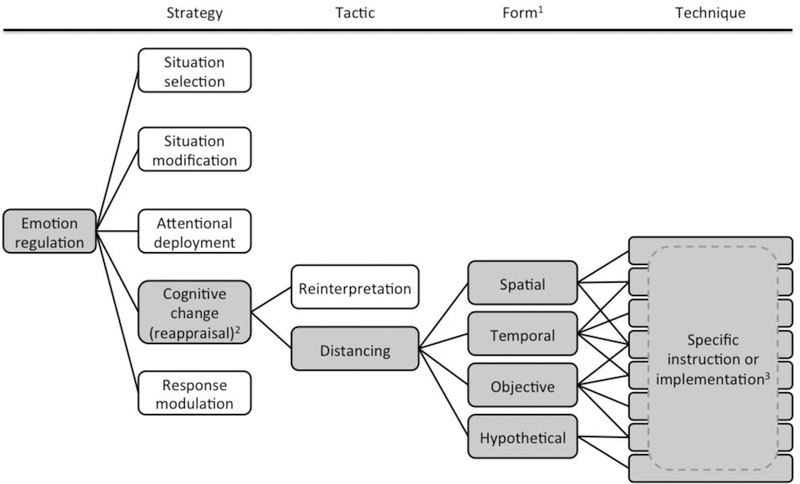Figure 1.

Taxonomy of distancing as an emotion regulation tactic. Gray boxes denote items at each level that relate to distancing. 1We refer to categories of distancing as forms; however, including a level between tactic and technique is not necessarily informative for all methods of emotion regulation. 2While distancing is regarded as a reappraisal tactic, there is discrepancy in the literature over whether reappraisal is synonymous with cognitive change or a subcategory of it. 3A distancing technique refers to any specific way that one or more forms of distancing is implemented (e.g. spatially distancing by imagining a stimulus receding away or imagining the stimulus being in another part of the world; spatially and temporally distancing by imagining that a stressful situation happened long ago and far away).
